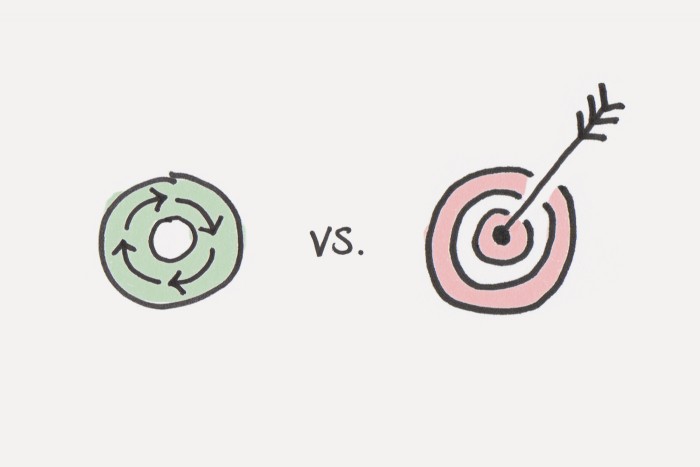Neuroscience
The Ultimate Guide to Calmly Regulate Your Nervous System
Feeling wired, overwhelmed, or numb is not a personality flaw—it's your biology asking for support. In the next few minutes, you’ll learn three science-backed ways to quickly regulate your nervous system so you can think clearly, feel grounded, and respond instead of react.
Why Regulating Your Nervous System Matters
Your nervous system is the command center for how you experience life: focus, mood, energy, sleep, and capacity to handle stress all run through it.
When it’s balanced, you feel present and adaptable.
When it’s stuck in overdrive or shutdown, even small challenges feel impossible.
Chronic dysregulation—constantly feeling on edge, exhausted, or detached—can amplify anxiety, burnout, digestive issues, and poor decision-making. Emerging work from Harvard (2024) and leading clinical programs shows that simple, consistent self-regulation practices can improve emotional stability, heart rate variability, and stress recovery without requiring complex tools.
A well-regulated nervous system doesn’t eliminate stress; it helps you recover quickly and respond with clarity.
What Does It Mean to Regulate the Nervous System?
To "regulate nervous system" activity means guiding your body back to an optimal zone of activation: alert but not panicked, calm but not collapsed. It’s your ability to shift out of fight, flight, or freeze and into a state where your thinking brain and emotional brain work together.
In practice, this looks like:
- Your heart rate and breathing naturally settling after a challenge.
- You noticing big emotions without being hijacked by them.
- You returning to focus, connection, and problem-solving more easily.
Is It Really Possible to Regulate Your Nervous System Fast?
Yes—within minutes. While deep healing takes time, targeted techniques can send immediate "safety signals" through your body. They activate pathways like the vagus nerve and improve heart rate variability, which Stanford researchers highlight as key markers of resilience and emotional regulation.
For quick results, focus on methods that are:
- Simple enough to use under stress.
- Grounded in physiology, not hype.
- Easy to repeat daily so they become automatic.
People Also Ask: Quick Answers
How can I regulate my nervous system in 30 seconds?
Use a short, controlled exhale.
Breathe in through your nose for 3–4 seconds, then exhale slowly through pursed lips for 6–8 seconds.
Repeat 3–5 rounds.
This activates your parasympathetic system and starts to dial down the stress response.
What are signs my nervous system is dysregulated?
Common signs include:
- Feeling on edge, jumpy, or easily overwhelmed.
- Trouble sleeping or relaxing.
- Emotional numbness, shutdown, or brain fog.
- Digestive discomfort, clenched jaw, or tight shoulders.
If these are chronic or intense, professional support is recommended.
Can breathing exercises really regulate the nervous system?
Yes. Slow, structured breathing balances oxygen and carbon dioxide, supports optimal blood flow to the brain, and engages the vagus nerve. Research-led clinicians use it as a core tool for nervous system regulation because it's accessible, safe for most people, and effective when practiced regularly.
How often should I practice nervous system regulation techniques?
For best results:
- Aim for 2–3 short practices per day.
- Use them both proactively (morning, midday) and reactively (during stress).
- Consistency matters more than perfection; think "micro-habits," not hour-long routines.
3 Essential Ways to Regulate Your Nervous System
1. Low-and-Slow Breathing: Your Instant Reset Button
A simple way to regulate nervous system activation is to adjust your breathing. Under stress, many people over-breathe—taking shallow, rapid breaths that reduce efficient oxygen use and leave the brain under-resourced. Low-and-slow breathing reverses this pattern and signals safety.
Key idea: breathe low, slow, and balanced, not big and forceful.
Example: You're about to present at work and feel your heart racing. Instead of trying to "calm down" by ignoring it, you place a hand on your lower ribs and guide your breath downward, letting your exhale lengthen. Within a minute, you feel more steady and focused.
Try this:
- Sit or stand tall, shoulders relaxed.
- Inhale gently through your nose for 4 seconds, feeling your lower ribs expand.
- Exhale slowly through your nose or pursed lips for 6 seconds.
- Repeat for 6–10 breaths.
Pro tip:
- Keep the breath smooth and comfortable.
- If you feel lightheaded, shorten the counts slightly.
- Use this before meetings, difficult conversations, or bedtime.
"When your breath becomes intentional, your brain gets the memo that you are safe enough to think clearly."
2. Harness Heart Rate Variability: HRV as a Daily Superpower
Heart Rate Variability (HRV) is the subtle variation in time between heartbeats.
Higher, flexible HRV is linked to better stress tolerance, emotional balance, and cardiovascular health.
Deliberate breathing and gentle muscle engagement can improve HRV and help regulate your nervous system.
Instead of chasing numbers, think of HRV as your body's adaptability score.
Practices that support HRV strengthen your vagus nerve, which influences your heart, lungs, gut, and emotional centers in the brain.
Example:
A busy parent feels fried by 4 p.m.
They take 5 minutes in the car before pickup to do paced breathing.
Over time, they notice fewer outbursts at home and faster recovery from daily stressors.
Try this "6 breaths per minute" rhythm:
- Inhale through your nose for 4 seconds.
- Exhale for 6 seconds.
- Continue for 5 minutes.
Optional muscle rhythm add-on:
- Every 10 seconds: pause 2 seconds, gently tense arms and legs for 3 seconds, relax for 3 seconds, pause 2 seconds.
- Match this to your breathing.
- Keep the tension at about 30–40% effort.
Tips for success:
- Practice at the same time daily (morning commute, lunch, pre-sleep).
- Stay comfortable; strain reduces HRV.
- Use this proactively, not just when overwhelmed.

3. The FLARE Technique: Turn Reactions into Intentional Responses
FLARE (Feel, Label, Allow, Respond, Expand) is a practical framework for real-time emotional regulation.
It helps you work with your sensations instead of fighting them, guiding your nervous system back toward balance.
Use FLARE when anxiety spikes, anger flares, or you feel overloaded.
It’s especially powerful when combined with low-and-slow breathing.
Step-by-step FLARE:
Feel
- Notice physical cues: tight chest, hot face, racing thoughts, clenched jaw.
- Simple awareness stops autopilot.
Label
- Name your experience briefly and neutrally: "anxiety," "frustration," "embarrassment," "tension in my stomach."
- Labeling engages the thinking brain and softens the fight-or-flight surge.
Allow
- Tell yourself: "It's okay to feel this; my body is trying to protect me."
- Drop the self-criticism and the urge to instantly fix the feeling.
Respond
- Choose one helpful action: 1 minute of paced breathing, stepping outside, a glass of water, asking for what you need.
- Align your response with your values, not your panic.
Expand
- Zoom out: notice sounds, colors, support around you, your longer-term goals.
- Remember: this feeling is part of your experience, not the whole story.
Example:
You get unexpected critical feedback at work.
Your heart spikes, your stomach drops.
You silently use FLARE, take 4 slow breaths, acknowledge "I'm anxious and surprised," allow the sensation, then choose to ask clarifying questions instead of shutting down.
FLARE doesn’t erase emotions; it restores your capacity to use them wisely.
Quick Implementation Guide
Start small.
Integrate these three tools into your day so regulating your nervous system becomes automatic, not an emergency fix.
Daily routine idea:
-
Morning (1–3 minutes):
- 6 breaths in a 4-in / 6-out rhythm.
-
Midday reset (2–5 minutes):
- HRV breathing or muscle rhythm during a break.
-
Stress moment (as needed):
- Apply FLARE + 3 rounds of slow exhale breathing.
-
Evening wind-down (3–5 minutes):
- Gentle breathing while in bed or stretching.
Consistency checklist:
- Keep sessions short and doable.
- Pair with existing habits (coffee, commute, shutdown routine).
- Notice subtle wins: quicker calm, fewer spirals, better sleep.
Common Pitfalls to Avoid
Even effective tools can backfire if misused.
Watch out for these:
Over-forcing your breath:
- Taking huge inhales or breathing too slowly can cause dizziness.
- Solution: stay comfortable; "smooth" over "dramatic."
Using techniques only in crisis:
- Waiting until you're overwhelmed makes it harder to regulate.
- Solution: practice when you're relatively calm to train your baseline.
Judging your sensations:
- Treating a racing heart or nervousness as "failure" adds stress.
- Solution: see them as information, not identity.
Expecting instant perfection:
- These skills compound over weeks, not seconds.
- Solution: track patterns, not single moments.
Next Steps: Make Regulation Your New Normal
To consistently regulate nervous system responses in 2025’s fast-paced world, think in systems, not band-aids.
Anchor these practices into your environment, schedule, and self-talk.
Simple next steps:
- Choose ONE technique from this guide to practice today for 2 minutes.
- Set two reminders on your phone labeled "Breathe" or "Check-in + FLARE."
- Notice one moment this week when you recovered from stress faster—that’s your nervous system learning.
If your symptoms feel intense, persistent, or tied to past trauma, consider working with a licensed mental health or biofeedback professional.
Combining expert guidance with these everyday tools can significantly enhance your ability to self-regulate and live with more steadiness, clarity, and ease.



